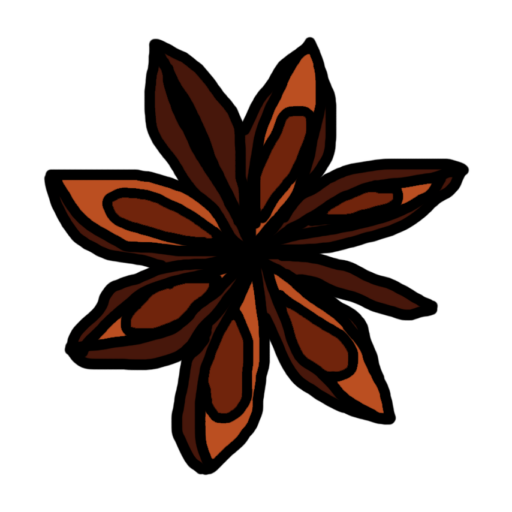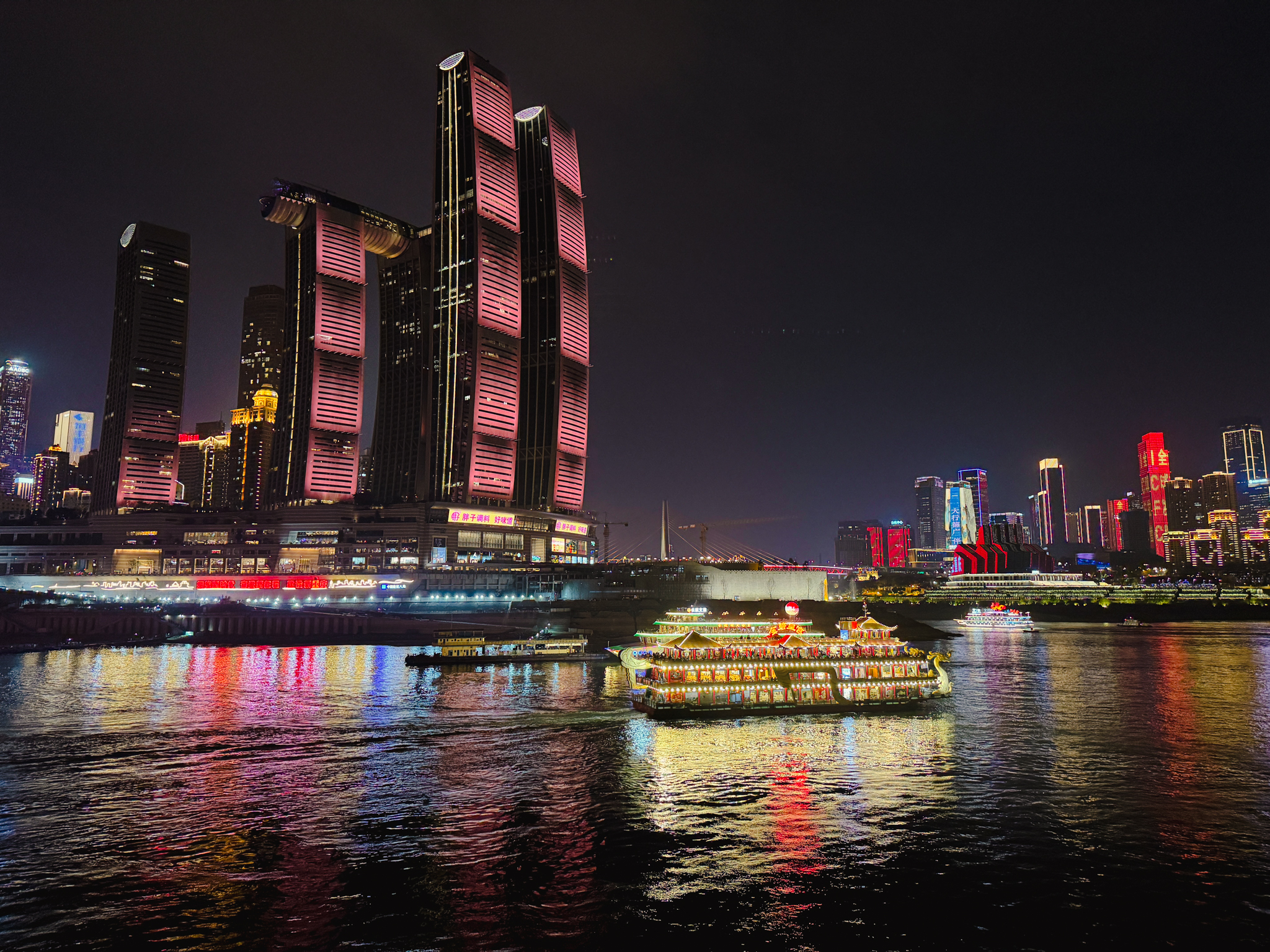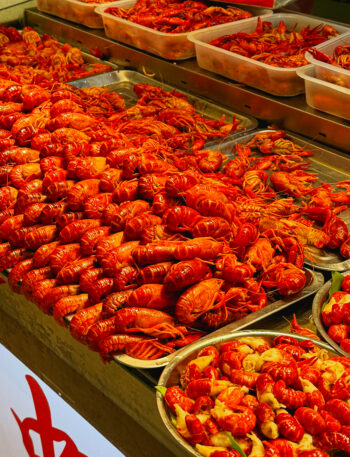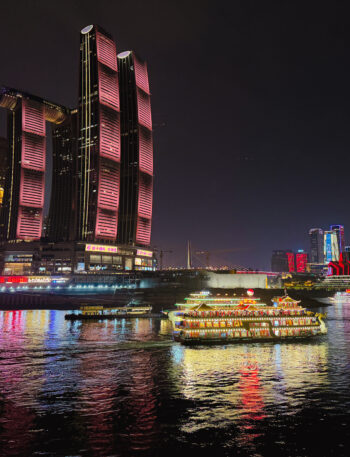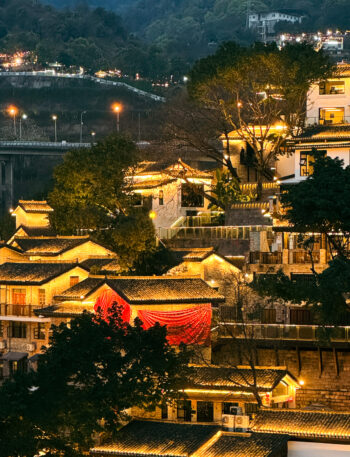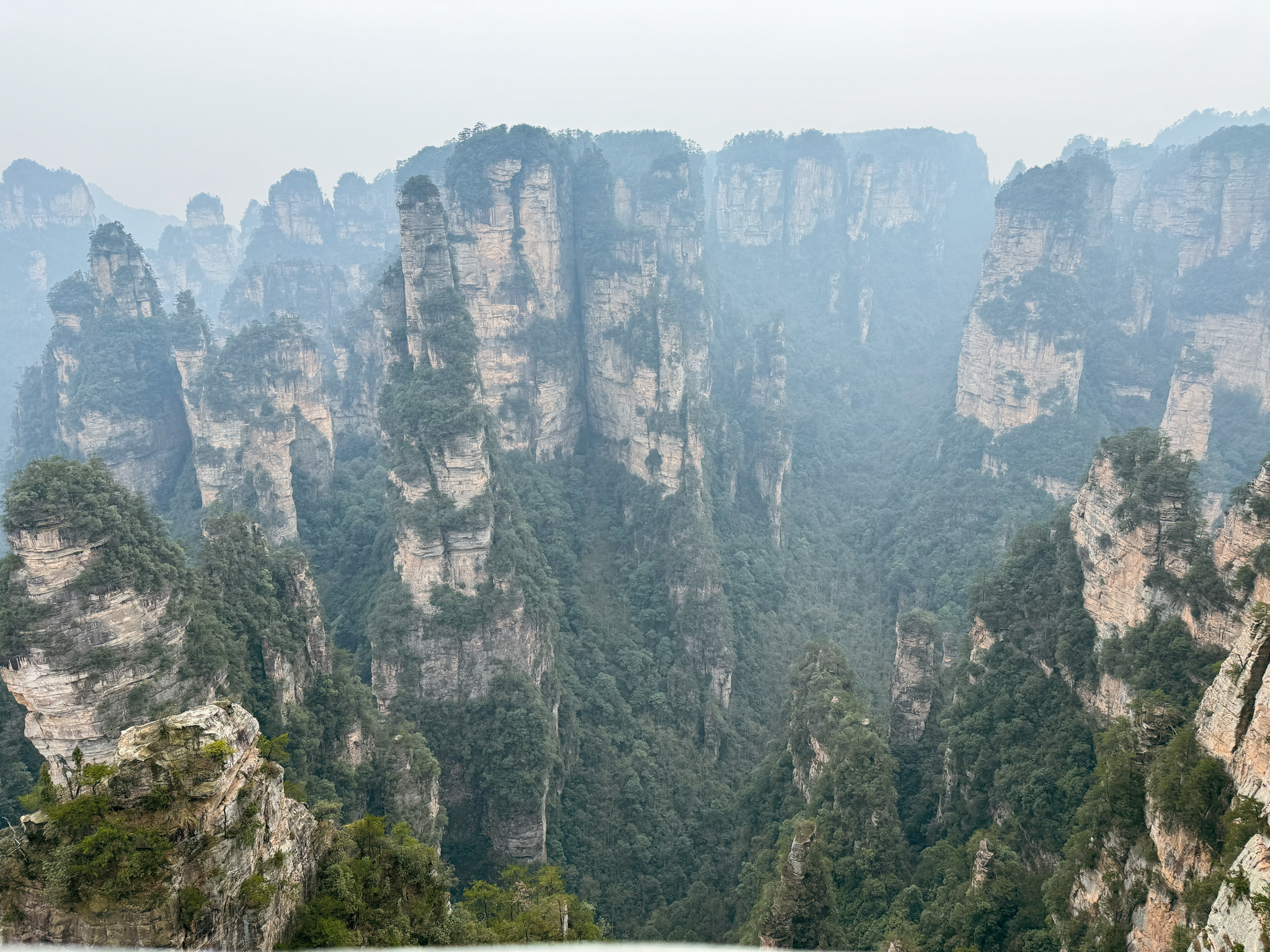
A six-minute overview of the city of Zhangjiajie in China’s Hunan province. This area is notable for its natural wonders, glass bridge and Tujia culture.
Zhangjiajie is both a region and a national park in China’s Hunan province. It’s most famous for its pillar mountains, which inspired James Cameron’s Avatar films.
The entire region is an incredible experience, and at minimum you need three days to see the main sites. Although you really could spend three full days in the national park itself.
If that sounds confusing, then hopefully this makes more sense:
There is Zhangjiajie national park, where the famous pillar mountains are housed. However, the park is very large and also holds dozens of other sights, vista points, food, hiking tracks, and nature (monkeys).
Outside of the national park there are a few main attractions that the destination is famous for like:
- The Zhangjiajie Glass Bridge which includes a zip line, slide, outdoor elevator (this is not the Bailong elevator, that’s inside the national park) and a nice one-way gorge walk.
- Tienman Mountain (Tienmenshan), which is an enormous geopark on the top of a pillar mountain around 1500m above sea level. This is the most famous attraction in Zhangjiajie and also includes the ‘Stairway to Heaven’. The cable car ride up alone is one of the most incredible experiences.
Recommended time spent: Minimum four days if you can make it happen. One for Tienman Mountain, one for the Glass Bridge, and two for the national park.
Which area is best to stay in Zhangjiajie?
You can stay anywhere in the Zhangjiajie city centre as it’s much easier to get around to attractions. All the accommodation options will be able to help arrange transfers to sites, or you can just use DiDi in the Alipay app to order a taxi (details in my ultimate guide).
You could also stay in Wulingyuan if you prefer to be in a quieter area, which is a small town near one of the national park entrances.
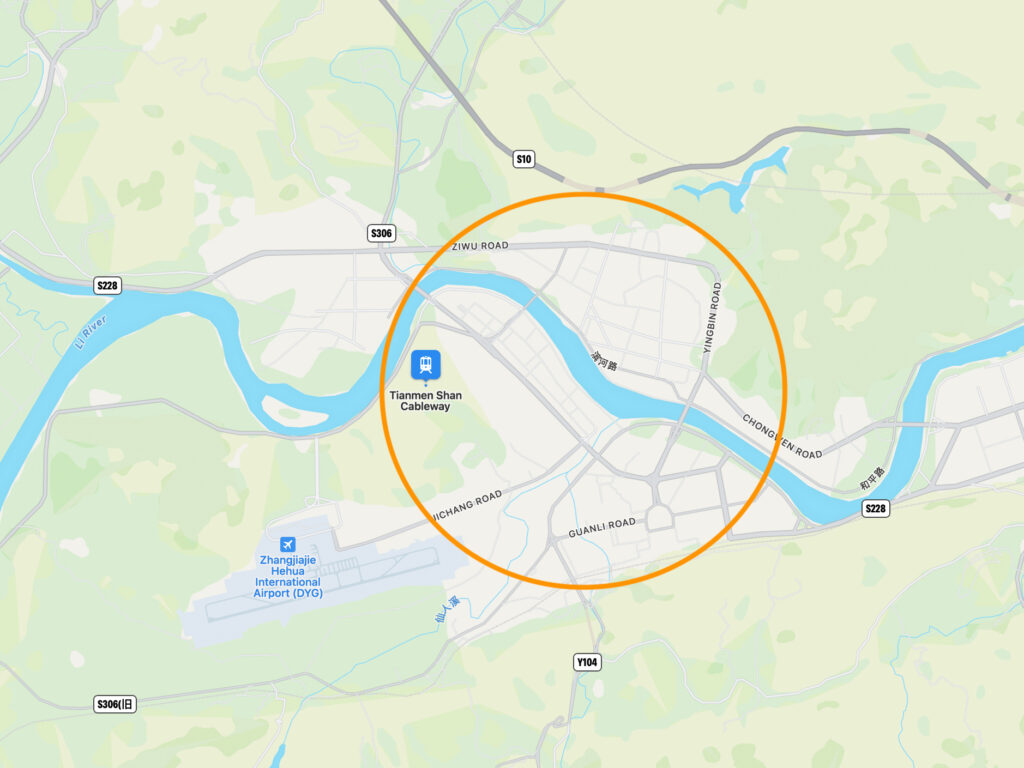
Watch out for
Your accommodation will probably try help you out by booking a local driver at quite a high price. It’s a reasonable cost for the distance and service and you’re not being scammed, but you can order DiDi taxis in the Alipay app very easily and it will cost you a fraction of the price of a driver and allow more freedom.
If you have limited time please note, it’s almost impossible to do multiple sites in one day as the park is so spread out and attractions are so elaborate, so choose what you want to see wisely.
Lastly, there are both public busses, and private shuttles that run for a few dollars. The shuttles basically just leave when they’re full so you might be sitting around for a while in shoulder seasons. Public busses also cease after 5pm so using the DiDi app is much more convenient and cost-effective.
Lifestyle summary
Zhangjiajie has a vibrant city with a heavy focus on tourism. There are lots of hotels, theatres, restaurants and transport in the two main hubs, Zhangjiajie and Wulingyuan. Anything you need you will find almost everywhere across the city and national park.
It has a very relaxing energy and is very nature-based, but while shopping and fine dining is less of a focus, there are still all the conveniences of a modern city available.
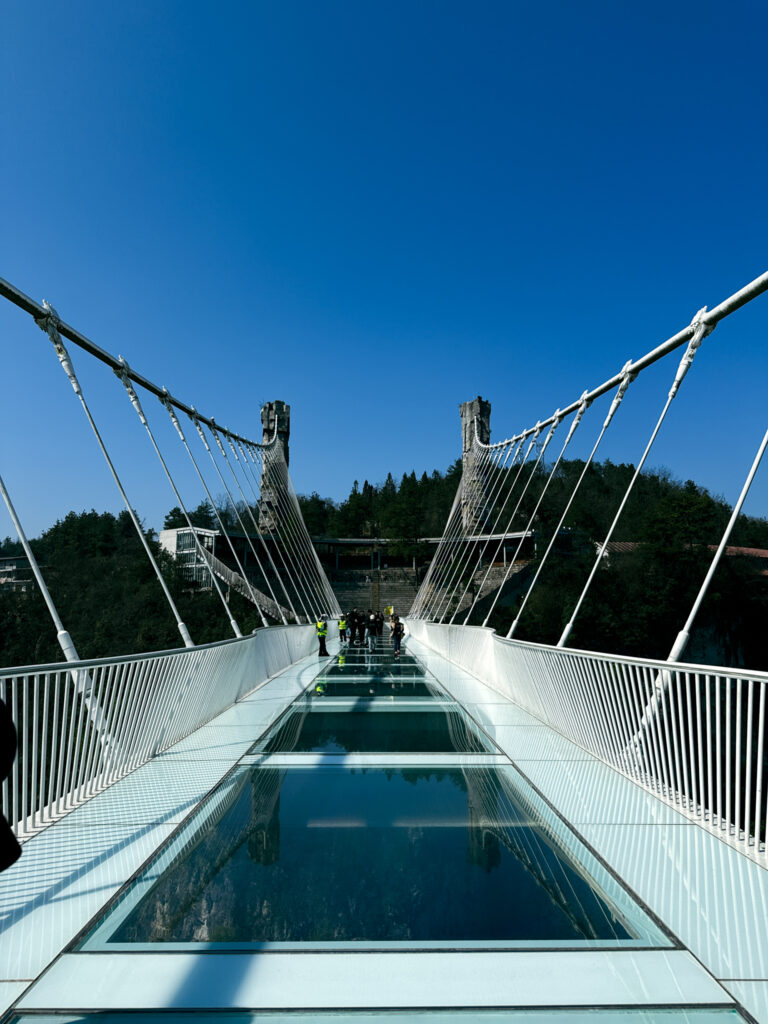
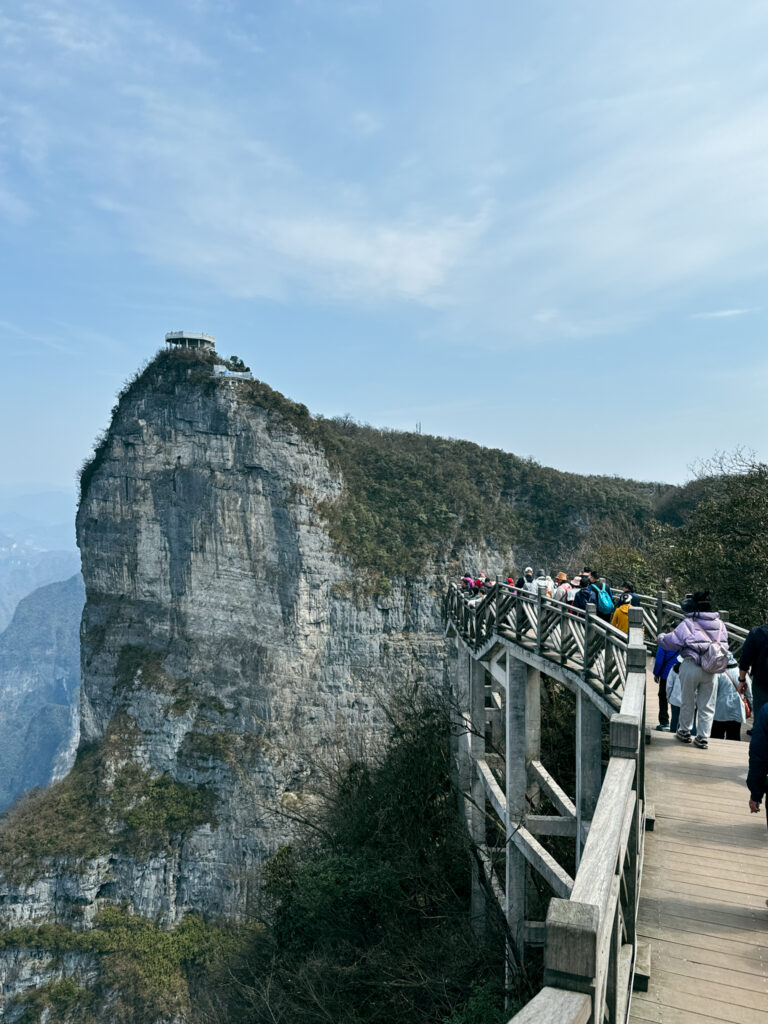
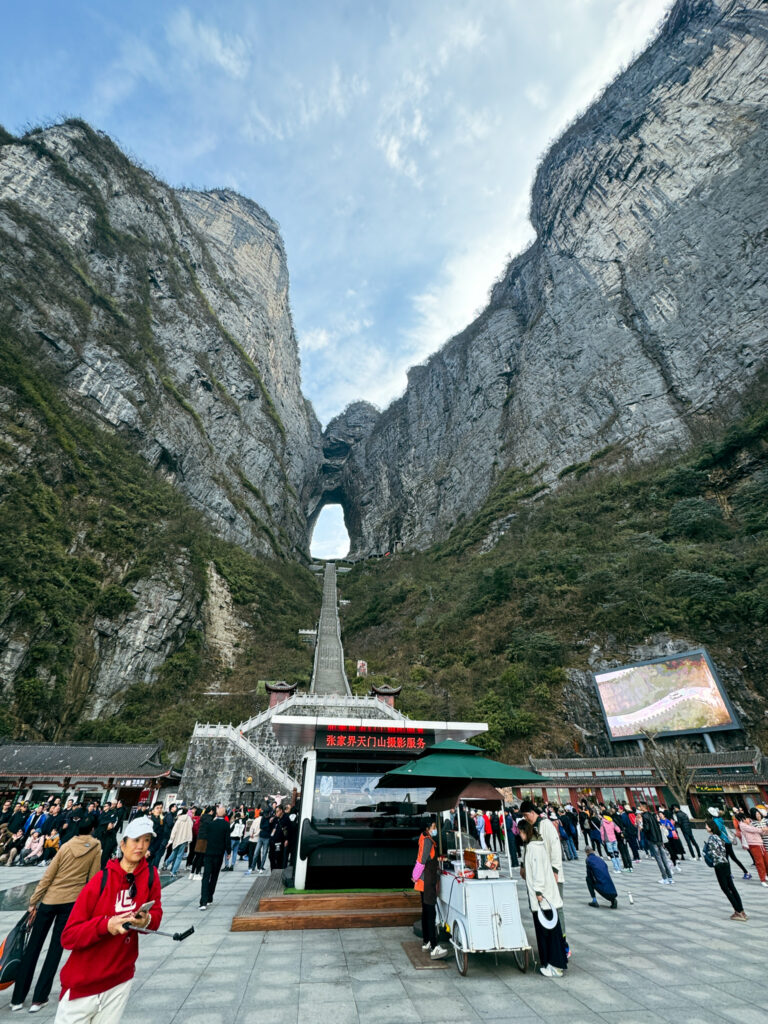
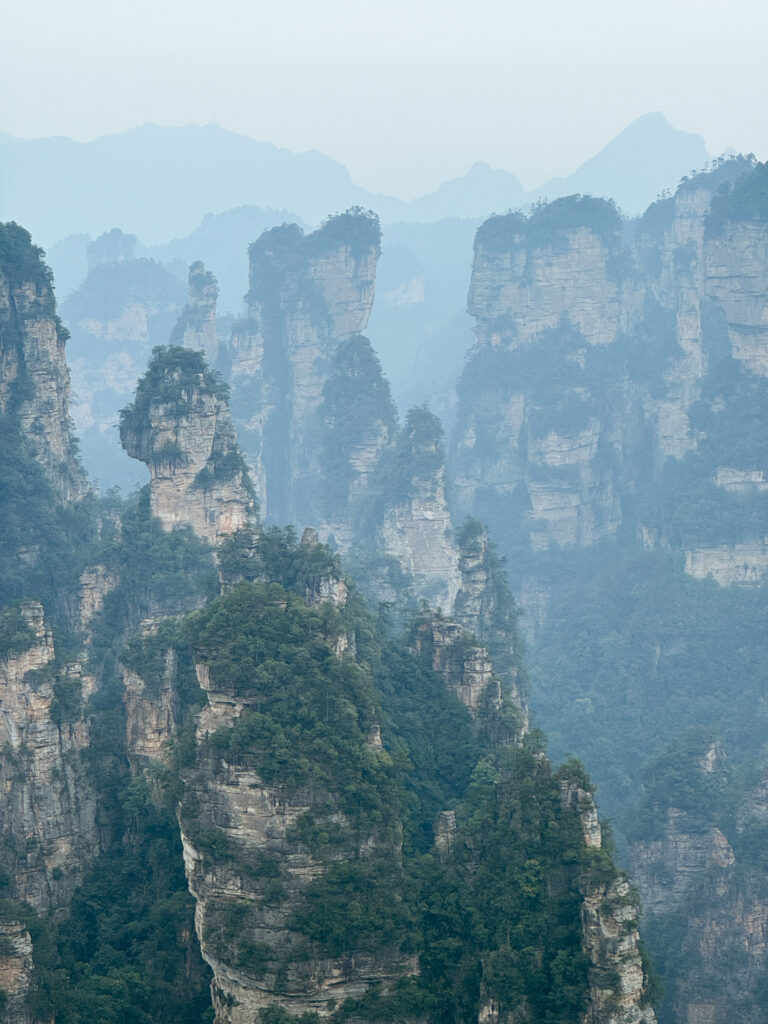
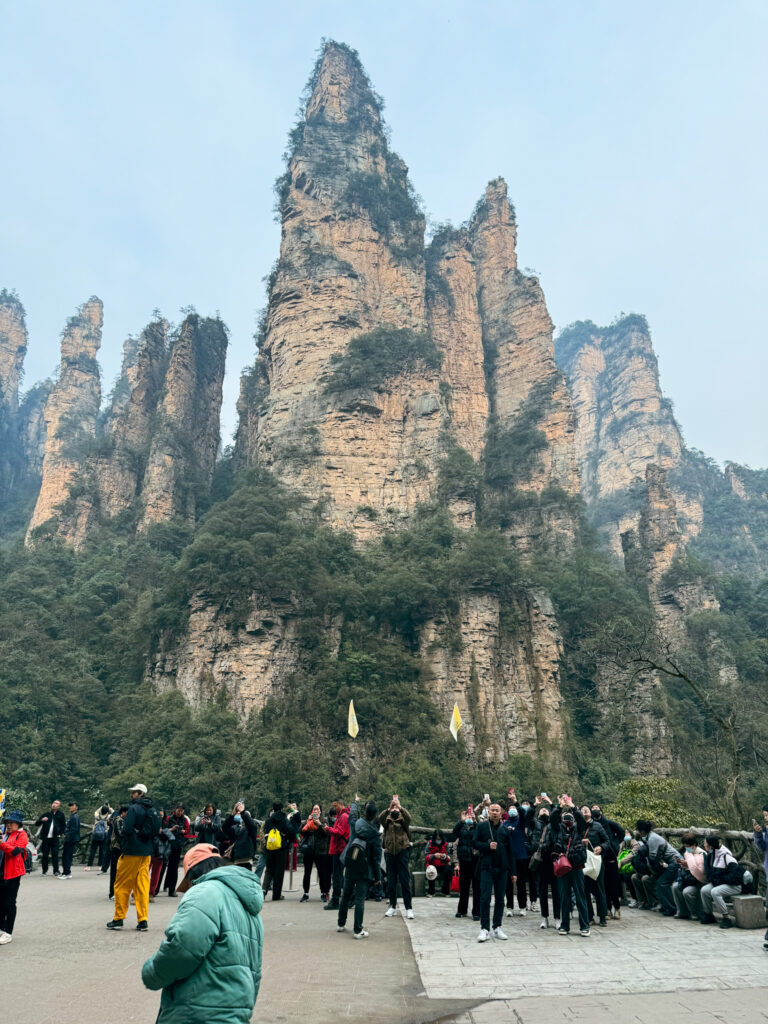
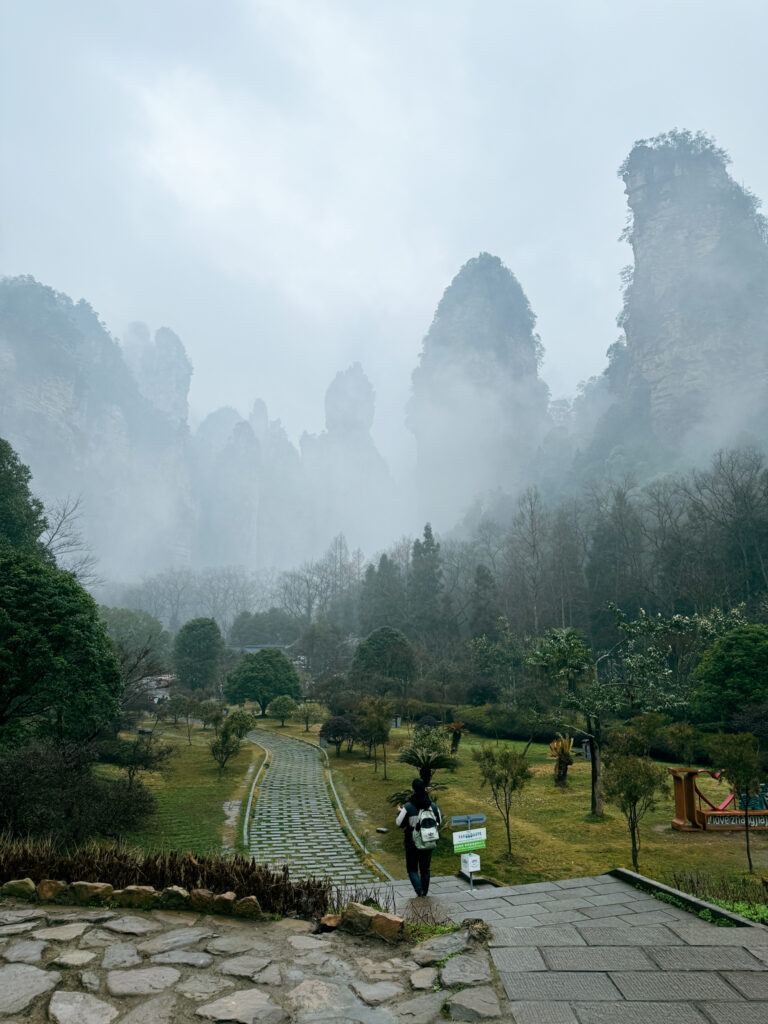
Top attractions in Zhangjiajie
- Zhangjiajie National Park
- Zhangjiajie Glass Bridge
- Tienman Mountain
- Stairway to Heaven (at Tienman Mountain)
- Huanglong Cave
- Tujia Folk Customs Park
- Local theatre performance (a few to choose from, always very elaborate and fun even with a language barrier)
Foods to try in Zhangjiajie
Hunanese food is centered on rice, and dishes that can be eaten with rice. There are lots of chillies for fragrance and spice which you generally pick around when eating. Sour and spicy rice noodles are a popular breakfast food that you might find offered at your accommodation. Here are a few items to look out for:
- Tujia pork (cured local pork)
- Smashed eggplant and peppers with or without century egg
- Local braised tofu (pictured further down)
- Sanxiaguo (a selection of three local specialties either dry or soup style)
- Sour and spicy rice noodle soup (pictured further down)
- Frog and river fish are also popular if you’re up for it
Check out my Instagram Story highlights for Zhangjiajie here for more context on the food and a better feel for the city.
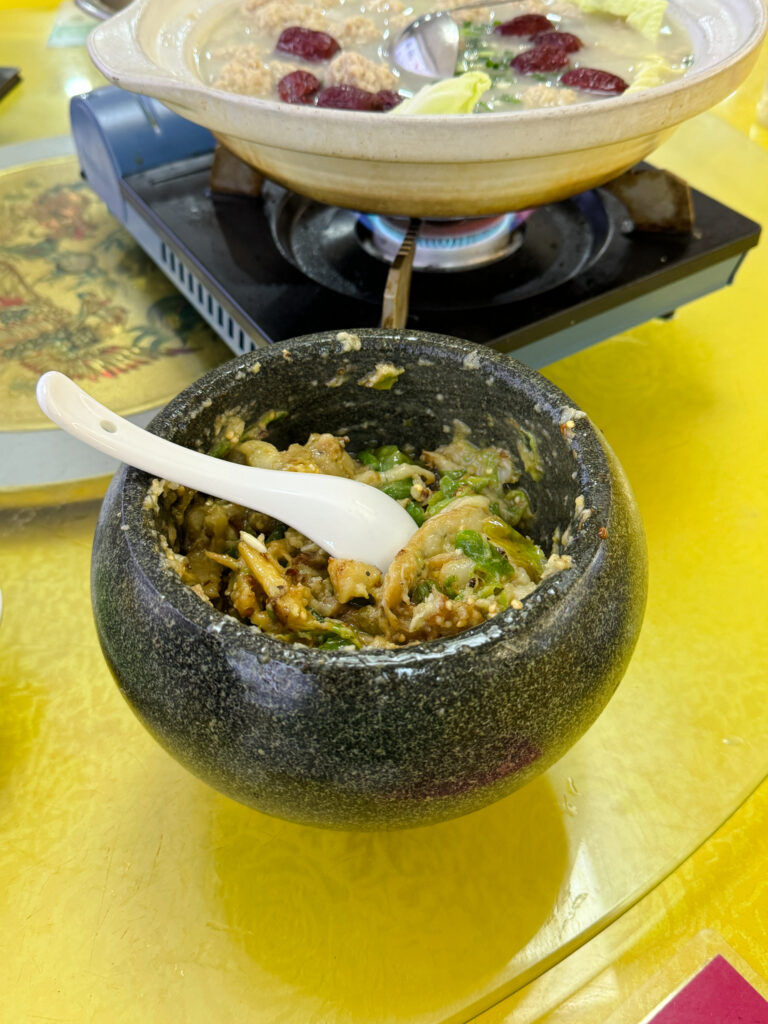
The best thing I ate was this smashed eggplant and pepper dish. It featured warm roasted green capsicum and silky eggplant smashed together with ginger and garlic. Incredible over hot steamed rice. Century egg is sometimes added which gives it a cheesy funk.
Shopping and souvenirs
There are no notable shopping options that I can list as we spent all the time outdoors in the national park. You will be able to buy souvenirs everywhere all around the national park and main attractions. The downtown area also has plenty of regular shopping options, though this region is most visited for nature.
Approximate cost of things $AUD
Budget accommodation: $50 per room per night
Nice hotel room: $80-200 per room per night
Bowl of noodles: $5
Can of beer: $1
Nice mid-range dinner for two: $40
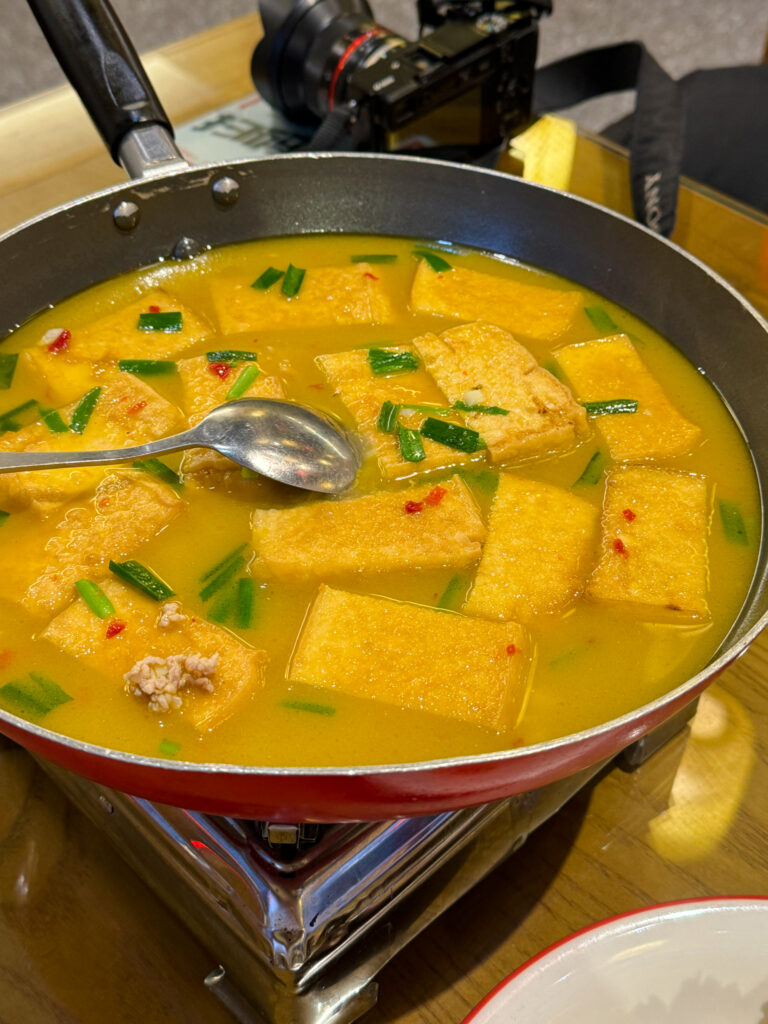
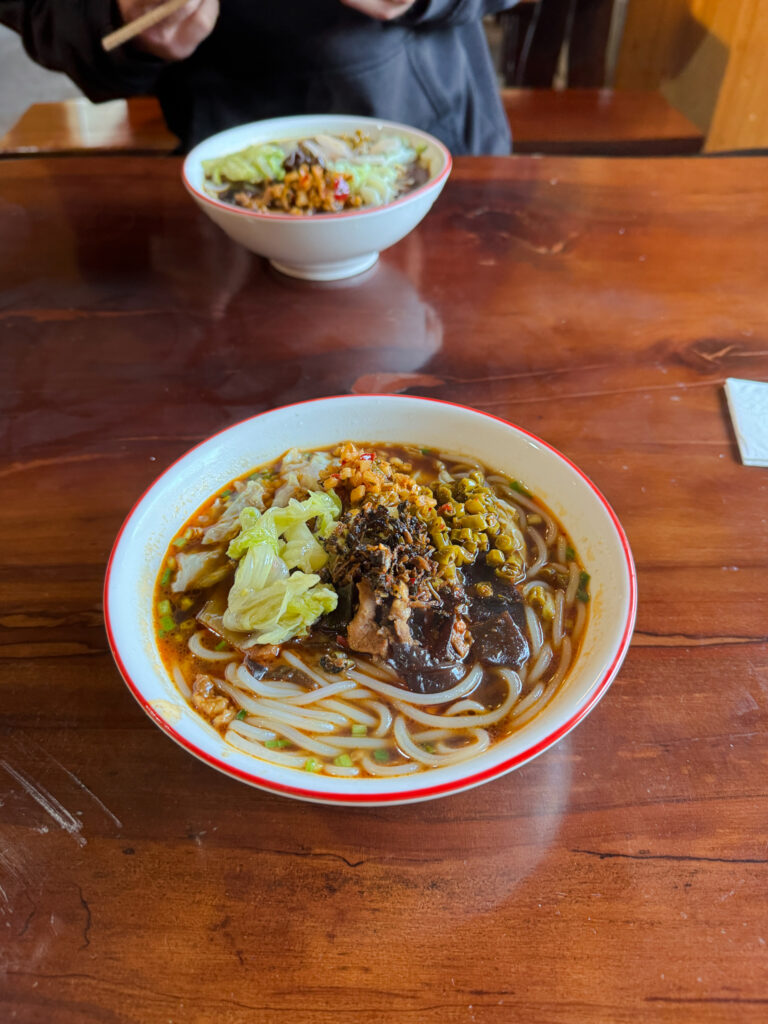
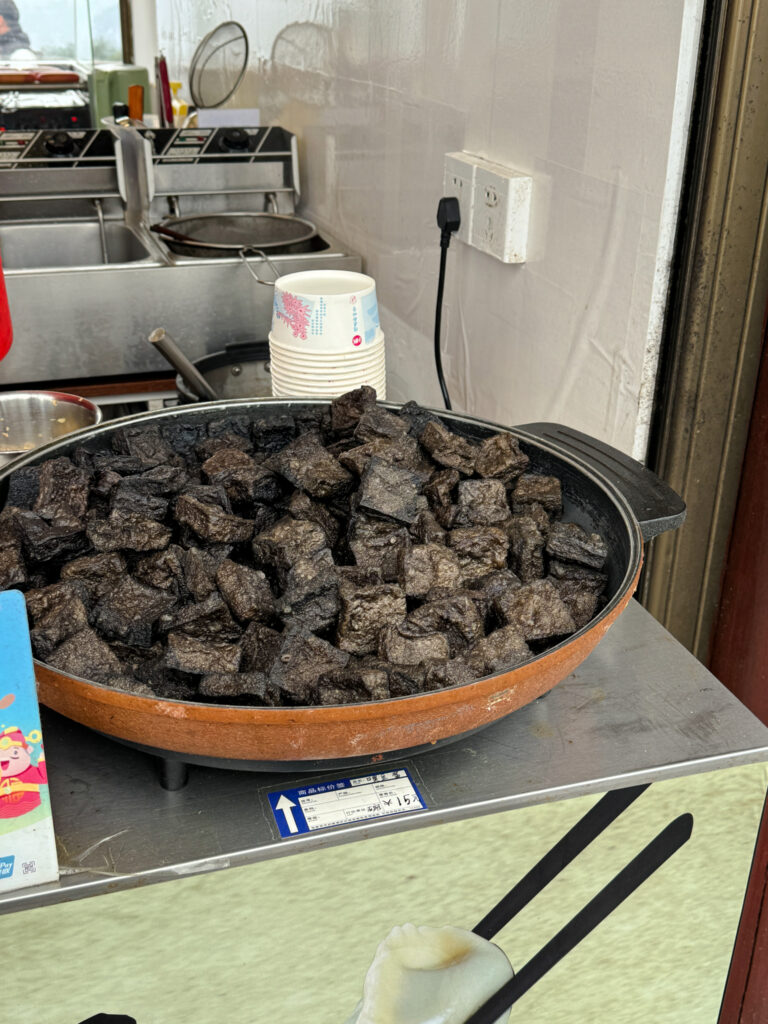
Disclaimer
Please keep in mind, this is all my own personal experience and everyone has a different travel style. I enjoy food, culture, soaking up the local lifestyle, a few fun tourist attractions and a little history and nature. My main joy when traveling comes from the food and culture, but you might prioritise the history, nature, or simply prefer luxury relaxation and fine dining over street food and value accommodation.
In terms of pace, I generally like to plan for one or two main activities per day, with usually one casual meal and one sit down meal and that’s what I’ve based this guide on. I hope this information helps you when planning your next trip!
To prepare for your trip, check out my ultimate travel guide for China and guide to visas for Australians.
